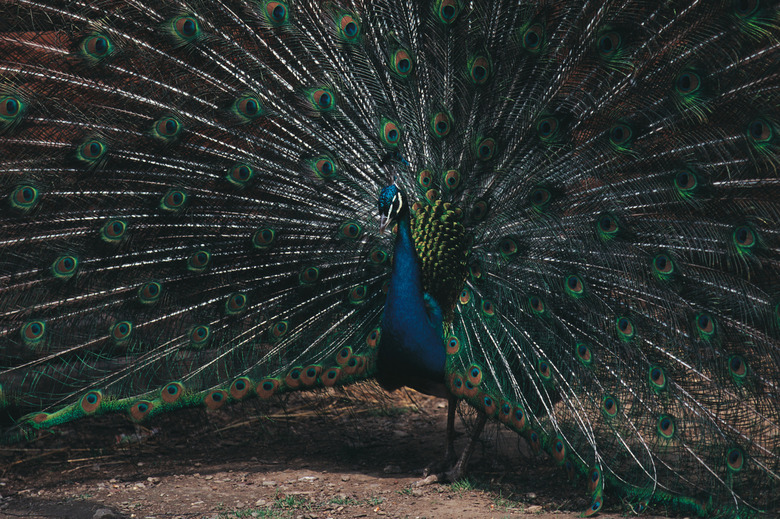What Is The Difference In The Meanings Between Adaptation & Natural Selection?
At some point in evolution almost 6 million years ago, humans began walking on two legs — an adaptation that enabled them to hunt, flee and use their hands to make primitive tools. Bipedalism was an adaptation and a beneficial one, which is why it was passed on through natural selection. The walkers had survival advantages and produced more offspring that inherited the ability to walk upright.
But adaptations are traits, distinct from the natural selection that drives them.
Natural Selection
Natural Selection
Natural selection is simply the tendency of beneficial traits to increase in frequency in a population. This occurs when the trait is beneficial (increasing the organism's chance of survival, mating, and reproducing) and heritable (it can be passed down through generations).
On the other hand, traits that reduce an individual's chance of survival, mating and/or reproducing will be eliminated from the population because the individual exhibiting those traits usually will not survive to reproduce and pass the harmful trait along. Albino animals, for example, rarely survive to adulthood so do not breed. Sickle cell anemia and hemophilia reduce the survival chances in humans and, prior to modern medical techniques, often killed their sufferers before adulthood.
A clear example of a trait that provides a reproductive advantage is the peacock's iridescent rump plumage. The tail feathers, which are 4 to 5 feet long, hinder the male's ability to flee predators, but they attract females that prefer the most elaborately adorned males as mates. Thus, prehistoric longer-tailed peacocks mated more frequently than shorter-tailed peacocks, sired more offspring and the trait was passed on to the point that males in the entire peafowl species now have extravagant plumage. The color of the tail feathers evolved over time as well and tells us that peahens favored brightly colored plumage.
Adaptation
Adaptation
Variations in a population lead to adaptations. An adaptation is a characteristic that increases an organism's chances of surviving, mating, and reproducing. The peacock's tail is such an adaptation. So is the snake's hinged jaw, which enables it to eat larger prey like rodents and frogs, which may be larger than the snake's head.
Other examples of beneficial traits include protective coloration, the ability to use a new food source (e.g., lactose tolerance), or a change in size or shape that enables a species to adapt more successfully to an environment.
Adaptation vs Natural Selection: How They Relate
Adaptation vs Natural Selection: How They Relate
Natural selection and adaptation are distinct from one another. Natural selection is the mechanism that drives the evolution of adaptations. Natural selection means that natural processes, including predators or food availability, favor the some variations within a population. These survivors pass the genes to their offspring. Over many generations the traits that favor survival accumulate.
The difference between adaptation and natural selection is that adaptation is the characteristic while natural selection is the mechanism that increases the probability that an advantageous characteristic is passed on and becomes commonplace.
The ancient lungfish, which appeared about 417 million years ago, was able to survive droughts in ways that other fish could not. A few fish might have had a superior ability to breathe surface air in a shallow pool, a characteristic that was passed on because they survived and reproduced, ultimately leading to the adaptation of lungs.
Adaptation vs Evolution: Change Over Time
Adaptation vs Evolution: Change Over Time
As advantageous adaptations accumulate over time, evolution occurs. Evolution means change in a species over time. The difference between inherited adaptations and evolution is that when the accumulated adaptations become so numerous that the resulting organism's DNA is no longer compatible with the ancestral version of the organisms, the organism has evolved into a new species.
Mutation Selection Theory
Mutation Selection Theory
Mutation selection theory holds that adaptations are sudden and random. This theory would hold that, all of a sudden, a longer-tailed peacock appeared and for no apparent purpose, as did a snake with an articulated jaw. Humans with six fingers appear often enough (and presumably did so in prehistoric populations).
But a mutation may be beneficial, deleterious, or neutral. Beneficial mutations are passed on through natural selection. Presumably, a sixth finger has proven to offer no benefit to humans, as it remains a mutation rather than a trait.
Cite This Article
MLA
Antony, Dan. "What Is The Difference In The Meanings Between Adaptation & Natural Selection?" sciencing.com, https://www.sciencing.com/difference-meanings-between-adaptation-natural-selection-13218/. 31 July 2019.
APA
Antony, Dan. (2019, July 31). What Is The Difference In The Meanings Between Adaptation & Natural Selection?. sciencing.com. Retrieved from https://www.sciencing.com/difference-meanings-between-adaptation-natural-selection-13218/
Chicago
Antony, Dan. What Is The Difference In The Meanings Between Adaptation & Natural Selection? last modified March 24, 2022. https://www.sciencing.com/difference-meanings-between-adaptation-natural-selection-13218/
